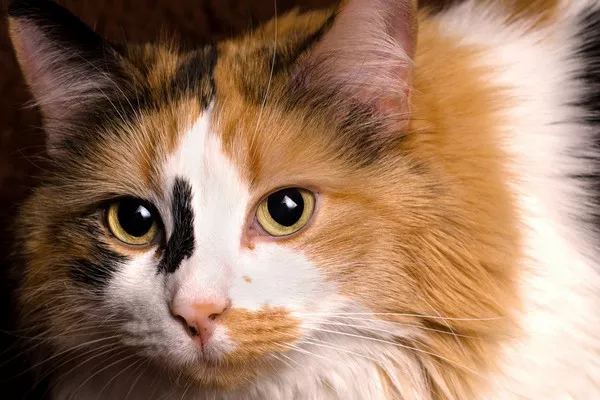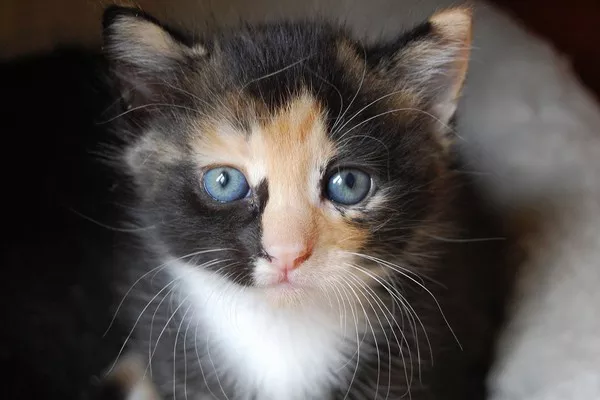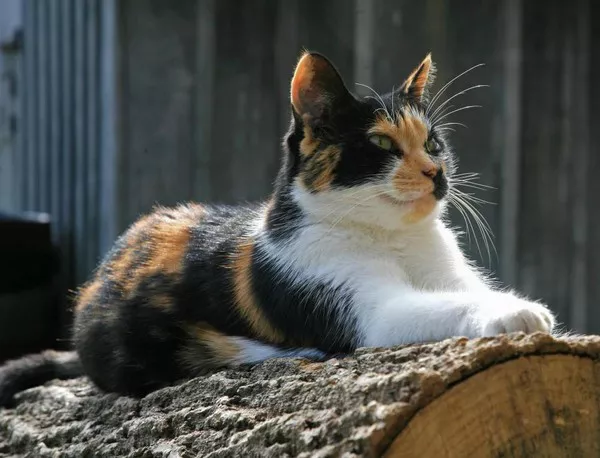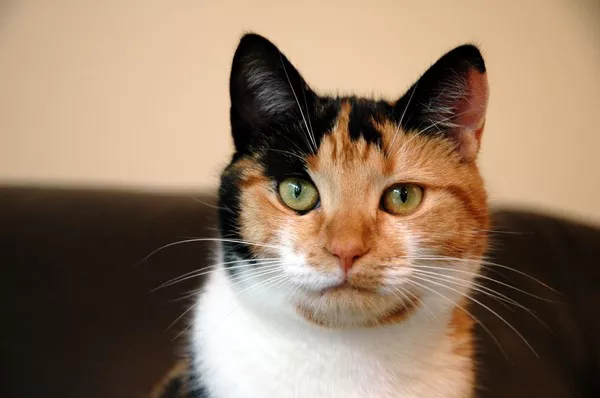Calico cats, adorned with their intricate blend of orange, black, and white fur, bring a distinctive charm to any home. The beauty of their coat, however, demands attentive grooming to preserve its health and vibrancy. Brushing your calico cat is not just a practical necessity; it’s an opportunity to deepen the bond between you and your feline companion. In this comprehensive guide, we explore the art of brushing a calico cat, providing insights into the benefits of grooming, selecting the right tools, and employing effective techniques to ensure your calico’s coat remains a testament to their beauty and well-being.
The Essence of Regular Brushing
Beyond the aesthetic appeal, brushing your calico cat plays a pivotal role in maintaining their overall health and happiness. Here’s why regular brushing is a must:
1. Preventing Matting and Tangles
Calico cats, especially those with longer fur, are prone to matting and tangles. Brushing helps prevent these issues by removing loose hairs and addressing knots before they become problematic. This not only ensures your cat’s comfort but also averts potential skin problems associated with matting.
2. Reducing Shedding Woes
All cats, including calicos, experience shedding as part of their natural hair growth cycle. Regular brushing aids in managing shedding by eliminating loose hairs, preventing them from accumulating around your home. This is particularly beneficial for those with allergies or sensitivities to cat dander.
3. Stimulating Blood Circulation
Brushing is not merely a cosmetic affair; it promotes good health. The act of brushing stimulates blood circulation to the skin, fostering a healthy coat and skin condition. It also provides an opportunity to check for any irregularities such as lumps, bumps, or skin irritations.
4. Bonding and Social Interaction
Brushing sessions offer valuable bonding time between you and your calico cat. They provide an avenue for positive social interaction, reinforcing trust and strengthening the emotional connection. By associating brushing with affectionate touch, you create a positive grooming experience for your feline friend.
5. Preventing Hairballs
Regular brushing helps minimize the risk of hairballs, a common issue in cats that groom themselves frequently. By removing loose hairs through brushing, you reduce the amount of hair ingested during self-grooming, ultimately lowering the likelihood of hairball formation.
Choosing the Right Grooming Tools
Selecting the appropriate grooming tools is paramount for effective and gentle brushing. Different brushes cater to various coat lengths and textures. Here are some common grooming tools suitable for brushing a calico cat:
1. Slicker Brush:
Ideal for preventing matting and removing loose fur, a slicker brush features fine, short wires closely packed together. It suits all coat lengths, especially effective for long-haired calico cats.
2. Comb:
A comb with both wide and narrow teeth is versatile for calico cats with varying fur lengths. Use the wider teeth for detangling and removing loose hairs, and the narrower teeth for precision grooming in sensitive areas.
3. Bristle Brush:
For short-haired calico cats, a bristle brush is excellent for distributing natural oils, removing loose hair, and providing a gentle massage to the skin.
4. Deshedding Tool:
Designed to reduce shedding, a deshedding tool effectively removes loose undercoat hairs. This tool is particularly beneficial for calico cats with thick fur prone to shedding.
5. Mat Splitter:
If your calico cat develops mats, a mat splitter can gently cut through the mat without harming the cat’s skin. Use this tool sparingly, as prevention is preferable to dealing with mats after they form.
6. Grooming Gloves:
Grooming gloves with rubber or silicone tips offer a hands-on approach to brushing. They are useful for removing loose hair and providing a soothing massage during grooming sessions.
Creating a Positive Grooming Environment
Before commencing a brushing session with your calico cat, it’s crucial to establish a calm and positive environment. The following tips help set the stage for a successful grooming experience:
1. Choose a Quiet Space:
Select a quiet and comfortable space for grooming to minimize external disturbances, helping your calico cat feel at ease during the brushing session.
2. Introduce Brushing Gradually:
If your calico cat is not accustomed to brushing, introduce the process gradually. Start with short sessions, allowing the cat to become familiar with the grooming tools and the sensation of being brushed.
3. Use Treats and Positive Reinforcement:
Associate grooming with positive experiences by offering treats and verbal praise during and after brushing. This creates a positive association with grooming, encouraging cooperation.
4. Establish a Routine:
Consistency is key when it comes to grooming. Establish a regular routine, whether it’s daily, weekly, or bi-weekly. A predictable routine helps your calico cat know what to expect, reducing anxiety during grooming sessions.
5. Be Gentle and Patient:
Approach grooming with gentleness and patience. Use slow, deliberate strokes, and be attentive to your cat’s reactions. If your cat becomes anxious or agitated, take breaks and resume when the cat is more relaxed.
6. Monitor Body Language:
Pay attention to your calico cat’s body language during grooming. If the cat shows signs of discomfort or distress, such as flattened ears, swishing tail, or defensive postures, pause the grooming session and reassess the approach.
Brushing Techniques for Calico Cats
Now that you’ve gathered the right tools and established a positive grooming environment, let’s explore effective brushing techniques for your calico cat. The approach may vary based on the cat’s fur length and preferences:
1. Start with a Gentle Introduction:
Begin each grooming session with a gentle introduction. Use your hands to pet and stroke your calico cat, allowing them to relax and become accustomed to your touch. Gradually introduce the grooming tools, starting with light touches before using the brush.
2. Brush in the Direction of Hair Growth:
When using a brush, comb, or slicker brush, always brush in the direction of hair growth. This ensures a more comfortable experience for your calico cat and effectively removes loose hairs without causing discomfort.
3. Focus on Sensitive Areas:
Pay special attention to sensitive areas such as the belly, underarms, and hindquarters. These areas are prone to matting, and regular brushing helps prevent tangles and discomfort. Use a gentle touch and take your time in these areas.
4. Use a Comb for Precision:
A comb with narrow teeth is useful for precision grooming in areas where a brush may not reach, such as around the face, ears, and tail. Gently comb through these areas to remove loose hairs and prevent matting.
5. Address Tangles and Mats with Care:
If you encounter tangles or mats, approach them with care using a mat splitter or gentle detangling tools. Begin at the outer edges of the mat and work your way inward, avoiding tugging or pulling that could cause discomfort.
6. Incorporate Grooming Gloves:
Grooming gloves provide a hands-on approach to brushing and can be particularly effective for short-haired calico cats. Use the gloves in a gentle stroking motion to remove loose hairs and provide a soothing massage.
7. Monitor for Signs of Discomfort:
Throughout the grooming session, monitor your calico cat for signs of discomfort or stress. If the cat exhibits signs of distress, such as vocalization, hissing, or attempts to escape, pause the grooming and reassess the approach. It’s crucial to prioritize your cat’s well-being and comfort.
8. Reward and Affection:
End each grooming session on a positive note by offering treats and verbal praise. This reinforces the positive association with grooming and encourages your calico cat to view the experience as a rewarding and affectionate interaction.
Grooming Challenges and Solutions
While grooming your calico cat can be a rewarding experience, certain challenges may arise. Here are common grooming challenges and effective solutions:
1. Resisting Grooming:
If your calico cat resists grooming, start with short, positive sessions and gradually increase the duration as the cat becomes more comfortable. Use treats and affection as positive reinforcement, and associate grooming with enjoyable experiences.
2. Aggressive Behavior:
In some cases, calico cats may exhibit aggressive behavior during grooming. This could be due to fear, discomfort, or a negative past experience. Approach grooming with patience, and if aggression persists, consult with a veterinarian or professional groomer for guidance.
3. Matted Fur:
Addressing matted fur requires patience and care. Use a mat splitter or detangling tools, working gently from the outer edges of the mat. If mats are persistent, consider consulting with a professional groomer for assistance.
4. Skin Sensitivities:
If your calico cat exhibits signs of skin sensitivities during grooming, switch to softer grooming tools and products designed for sensitive skin. Consult with a veterinarian to rule out any underlying skin conditions and receive guidance on appropriate grooming practices.
Conclusion
In conclusion, brushing your calico cat is not just a grooming ritual; it’s a meaningful way to nurture their beauty and well-being. By understanding the unique needs of calico cats and employing effective grooming techniques, you can ensure that their coat remains a testament to their health and vibrancy.
As you embark on this grooming journey with your calico companion, remember that patience, gentleness, and positive reinforcement are key elements. Establishing a grooming routine that aligns with your cat’s preferences and needs will not only maintain their beautiful coat but also strengthen the bond between you and your beloved calico friend.
Embrace the joy of grooming as a shared experience, fostering a connection that goes beyond the physical act of brushing. Your calico cat’s coat tells a story of health, happiness, and the cherished moments you both spend together in the artful care that defines the unique relationship between a cat and its devoted caregiver.



























